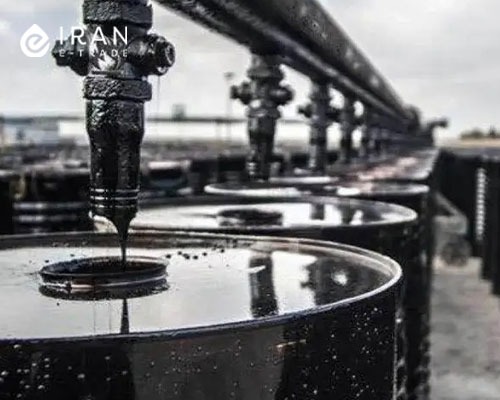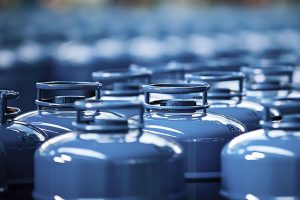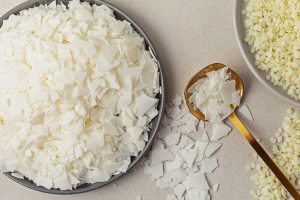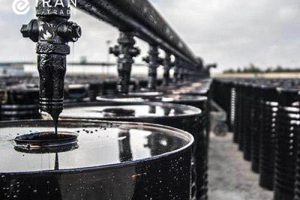Bitumen Emulsion Production: Processes + Applications
Bitumen emulsion production has various methods, each involving a different process for combining bitumen with water and an emulsifying agent. In the production of asphalt emulsions, the manufacturers use materials such as pure or polymer-modified bitumen, water, acid, emulsifier, calcium chloride, and, if needed, hydrocarbon solvents. The emulsifier creates an electric charge on the bitumen particles, preventing them from sticking together and ensuring the stability of the mixture.
Asphalt emulsion has many uses in various road construction and civil engineering projects due to its features such as reduced fire risk, lower pollution, and its suitability to use in different weather conditions. Therefore, in this article from the Iran ETrade blog, a trusted source for bitumen price inquiries, we will discuss asphalt emulsion production in more detail.
What is Bitumen Emulsion?
Bitumen emulsion is a liquid form of bitumen that bitumen manufacturers produce by mixing low-viscosity bitumen with water and an emulsifier.
During bitumen emulsion production process, solid bitumen is transformed into a low-viscosity liquid, which makes it easy to use in industries such as construction, road building, and waterproofing.

Components of Bitumen Emulsion
Three main ingredients make up the composition of asphalt emulsion: water, bitumen, and an emulsifier. Sometimes, additives such as stabilizers and PH or viscosity regulators are also included. Therefore, a typical composition contains 55–65% bitumen, 35–45% water, and up to 0.5% emulsifier.
The emulsifier creates a positive (cationic) or negative (anionic) charge around the bitumen droplets that prevents them from clumping together and ensures the stability of the emulsion. The choice of charge type for the emulsifier depends on the type of surface in the project.
Types of Bitumen Emulsion Production Methods
There are two main methods of bitumen emulsion production: the high-shear mixer and the colloid mill methods. We will discuss both of these methods in the following sections.
1. High-Shear Mixer Method
In this method, bitumen manufacturers first heat bitumen to around 100°C, while a stream of water containing alkaline salt is poured into it. The bitumen and water are then thoroughly mixed by an impeller rotating at high speed inside a chamber.
Therefore, this process produces bitumen emulsion through chemical reactions between the salt in the water and the acidic components of the bitumen. As a result, The quality of asphalt emulsion largely depends on the type and quality of the bitumen used.
2. Colloid Mill Method
In this method, bitumen manufacturers combine solid bitumen with emulsifying agents in an aqueous solution. Then they transfer the mixture to a colloid mill using a pump or hydraulic system. There, the mixture is thoroughly homogenized to ensure a uniform emulsion.
Equipment for Bitumen Emulsion Production in the Colloid Mill Method
Bitumen emulsion is applicable for road surface coating, waterproofing, and corrosion protection.
Producing bitumen emulsion by the colloid mill method requires special equipment, which we will introduce below.
Emulsifier Mill
This device is a mechanical tool for combining bitumen and emulsifying agents. It is typically a portable machine with rotor and stator components.
Bitumen and emulsifying agents enter the device through the mill’s inlet and are then mixed by the rotation of the rotor and stator.
Pump
The pump transfers the bitumen and emulsifier solution to the mill and must provide the necessary pressure and flow for bitumen emulsion production process.
Tanks and Pipelines
These can store and transfer bitumen, emulsifiers, water, and the bitumen emulsion. Therefore both tanks and pipelines must be resistant to chemical and physical factors.
Control System
A control system consisting of sensors, controllers, and displays monitors the asphalt emulsion production process.
How Is Bitumen Emulsion Made?
Generally, water and bitumen do not mix. However, bitumen emulsion production process has a special technology that makes it possible.
In this process, the emulsifier keeps the bitumen particles suspended and stable within the water, allowing the bitumen to float in the water as very fine droplets. In some cases, bitumen manufacturers also use a stabilizing agent in the process.
Bitumen Emulsion Production Process
Bitumen emulsion is a liquid mixture made from bitumen, water, an emulsifier, and some additives. First, the bitumen manufacturers combine bitumen with water using a special device called a colloid mill, which breaks the bitumen into fine droplets.
This allows the emulsifier molecules to attach more easily to the bitumen droplets. Also, there are several methods for producing asphalt emulsion, and we will discuss them in more detail in this section.
1. Preparing Bitumen: The First Phase of Production Process
Asphalt emulsion contains 50 to 70 percent bitumen. Typically, the bitumen used for producing asphalt emulsion should have a penetration grade of 60/70, 70/100, 100/130, or a viscosity of 30.
The bitumen suitable for bitumen emulsion production should be soft and have low viscosity. In some cases, the bitumen needs to be heated to achieve these conditions.
These properties are crucial for the easy transfer and pumping of bitumen from storage tanks to the mill and better mixing of water and bitumen. Additionally, bitumen must be soft enough to break into fine particles during milling.
2. Preparing the Water Phase for Bitumen Emulsion Production
Asphalt emulsion typically contains 30 to 50 percent water phase. In this stage of production, the emulsifier and other additives are dissolved. The emulsifier constitutes about 1% of the weight of the water phase and can be either liquid or solid.
Sometimes, it is necessary to heat the water to a specific temperature to dissolve the emulsifier. However, in general, the water temperature should remain below 70°C because heating it above this point can cause evaporation.
This is because overheating water reduces its concentration and increases the emulsion density, and ultimately affects the properties of the asphalt emulsion.
3. Producing Bitumen Emulsion by Combining Water and Bitumen
In bitumen emulsion production, the manufacturers mix bitumen with the aqueous phase solution using a special device called a bitumen emulsifier mill or colloid mill. The colloid mill consists of two parts: a stationary section (stator) and a rotating section (rotor).
The rotating section spins at a speed between 1000 and 6000 RPM, converting the bitumen into fine droplets. The rotating section is inside the stationary section, with a gap between them ranging from 250 to 500 microns.
The manufacturers control the size of the bitumen droplets by adjusting the distance between these two sections.
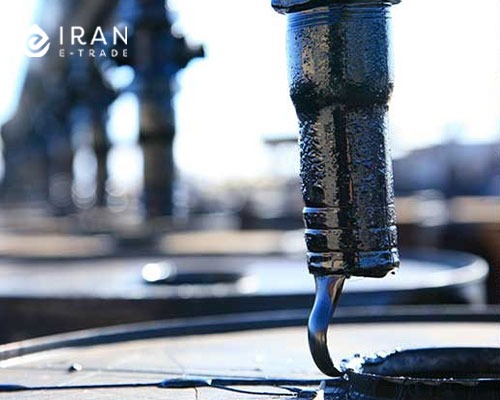
Methods of Combining Water and Bitumen for Producing Bitumen Emulsion
Based on the design of the equipment and the desired production capacity, the manufacturers can combine aqueous phase and bitumen by using three different methods to produce asphalt emulsion.
These methods include batch, semi-continuous, and continuous processes.
1. Batch Production Method
This method is useful when the bitumen emulsion production volume is low. Based on the required amount of bitumen emulsion, bitumen manufacturers measure a suitable quantity of bitumen and aqueous solution.
Then they pour emulsifier solution and bitumen into two separate tanks and transfer them to the colloid mill through pipes and pumps. In the final stage, they produce asphalt emulsion by mixing these two components in the colloid mill.
Using Hard Bitumen in the Batch Method
In the batch method, the quality and type of bitumen are very important. Using hard or polymer-modified bitumen makes the process more challenging. These types of bitumen require higher temperatures and greater pressure to enter the pump and mill.
For high-density bitumen, bitumen manufacturers use pressurized mills, and they have to cool the produced emulsion to below 100°C before storing it.
2. Semi-continuous Production
In the semi-continuous method, the colloid mill operates continuously. Manufacturers store aqueous phase and bitumen in separate tanks. Then, transfer tanks deliver the bitumen and water to the mill, while two full tanks hold reserve supplies of bitumen and water.
When the transfer tanks are empty, the full tanks begin supplying the materials. Then, bitumen and water are refilled into the empty tanks. In this method, the full tanks are always ready to keep the process running without interruption.
3. Continuous Production
In the continuous method, the colloid mill operates steadily and without interruption. The manufacturers transfer bitumen, water, emulsifier, and acid separately through pipes.
However, before reaching the mill, all material streams enter a common pipe where they are mixed, and then the combined mixture is fed into the colloid mill.
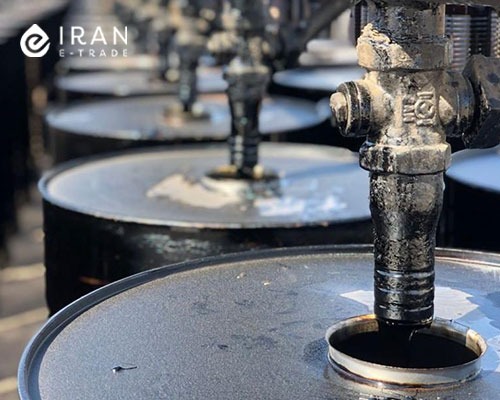
The Most Common Methods for Producing Bitumen Emulsion
The bitumen emulsion production process involves combining bitumen and water. In this method, bitumen is dispersed as fine droplets in water and then stabilized by an emulsifier.
The most common methods for producing asphalt emulsion are high-speed mixing and the colloid mill method, which we will explain more about below.
High-Speed Mixing Method
In this method, the manufacturers combine bitumen and water at high temperatures and speed until the bitumen is dispersed as fine droplets in water. Then, they add the emulsifier to prevent the bitumen droplets from coagulating.
Colloid Mill Method
In this production method, The manufacturers continually pass bitumen and water through a colloid mill at high temperatures.
The mill contains rapidly rotating blades that disperse the bitumen particles into the water. Then, they add the emulsifier to prevent the particles from coagulating.
Common Issues in Bitumen Emulsion Production Line
Various factors influence the bitumen emulsion production, all of which can affect the quality of the final product. Some of the most common problems in the asphalt emulsion production process include:
- Emulsion Instability: Using an unsuitable emulsifier in the colloid mill can lead to unstable bitumen and an inconsistent final product.
- Poor Adhesion: Low-quality bitumen results in weak adhesion, especially in road construction applications.
- Insufficient Particle Distribution: If bitumen particles are not finely broken down, they won’t disperse evenly in the water.
Important Factors in Bitumen Emulsion Production
Various factors, including the type of bitumen, emulsifier, production temperature, and mixing speed, play a crucial role in bitumen emulsion production. In fact, the type of bitumen and emulsifier significantly impact the quality and properties of the final product.
The manufacturers should control the production temperature to prevent the coagulation of bitumen particles. Finally, the mixing speed must also be optimized to break down the bitumen particles without causing damage.

Classification of Bitumen Emulsion Based on Emulsifier Type
Bitumen emulsions are classified into two categories based on their type of emulsifier: cationic and anionic asphalt emulsions.
A cationic bitumen emulsion contains an emulsifier with a positive charge, while an anionic asphalt emulsion has an emulsifier with a negative charge. Cationic asphalt emulsions are good for sealing surfaces exposed directly to water and air.
However, anionic asphalt emulsions are suitable for surfaces that are more exposed to chemical materials.
Applications and Reasons for Using Bitumen Emulsion
The production of bitumen emulsion is important for various industries and applications. This type of bitumen is useful for sealing surfaces, protecting against different weather conditions and corrosion, maintaining and repairing concrete, and providing adhesion between layers, asphalt, and metal surfaces.
However, it is essential to improve the quality of the bitumen emulsion production to enhance its durability and longevity.
Advantages of Using Bitumen Emulsion
Some key advantages of using asphalt emulsion include:
- High adhesion
- Availability of tools and equipment
- Faster water evaporation compared to cutback bitumen, increasing application speed
- Ability to produce asphalt emulsion with varying concentrations for different applications
- The ability to enhance bitumen quality and improve its properties (adhesion and viscosity) based on the process
- Reduced environmental pollution
- More cost-effective than cutback bitumen due to faster unloading, loading, distribution, and no need for heating
Properties of Bitumen Emulsion
Bitumen emulsion is known for its high penetration and strong resistance to weather and water.
Its high penetration allows it to easily spread over various surfaces, which makes it especially suitable for areas constantly exposed to moisture. Finally, its ease of application makes it convenient and user-friendly.
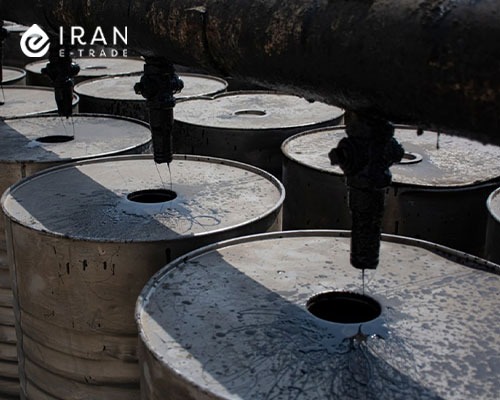
Advantages of Bitumen Emulsion Compared to Cutback Bitumen
Compared to cutback bitumen, bitumen emulsion production offers several benefits for road construction and other uses:
- No need for petroleum-based solvents
- Environmentally friendly
- Applicable in humid weather conditions
- No heating is required during use
- Safe storage with no risk of fire during storage or transport
- Wide applications in road construction
Difference Between Bitumen Emulsion and Cutback Bitumen (MC)
Bitumen emulsion production can offer advantages over cutback bitumen. Below is a comparison of the two types in terms of composition and application.
Chemical Composition
MC bitumen is a type of cutback bitumen that is solid at first and gradually becomes liquid under sunlight and heat. In contrast, asphalt emulsion is made by mixing water and bitumen.
Usage and Application
MC bitumen has many uses in traditional road construction. Road workers apply it for the surface coating of roads. Furthermore, due to its strength and high durability against weather conditions, it is an excellent choice for high-traffic roads.
In contrast, bitumen emulsion is useful in more advanced and modern road construction. Thanks to its high permeability, it easily combines with aggregates and road mixtures. This type of bitumen is used for road stabilization and the creation of asphalt layers.
Types of Bitumen Emulsion Based on Their Curing Speed
Bitumen emulsion production is classified based on bitumen’s curing speed into three categories: rapid curing (RC), medium curing (MC), and slow curing (SC). Below, we will delve further into these types.

Rapid Curing Bitumen Emulsion
Rapid curing bitumen emulsion is another type of asphalt emulsion used in road construction and the construction industry.
This bitumen is produced with water and, after a short period, the emulsion breaks, allowing the bitumen to return to its pure form.
Advantages and Applications of Rapid Curing Bitumen Emulsion
The advantages of rapid curing asphalt emulsion are: easy use due to its quick curing, fast setting time because of rapid water evaporation, high resistance to water, moisture, and corrosion, durability and longevity, and application in surface coatings.
Medium Curing Bitumen
This asphalt emulsion is suitable for mixing with coarse aggregates.
Bitumen manufacturers use medium-curing emulsifiers in this type of bitumen emulsion production. Therefore, medium-curing bitumen is better suited for coating stone aggregates at high temperatures.
Slow Curing Bitumen
This bitumen has high stability when it comes in contact with stone materials and applies to fine aggregates and continuous grading.
By adding water, its viscosity can be increased, which makes it suitable for applications such as tack coat and dust control.
Important Factors in Choosing Bitumen Emulsion
When selecting bitumen emulsion, you should consider the following factors:
- Climate Conditions and Weather of the Region
- Types of Surface to be Coated with Bitumen
- Traffic Volume on the Road for Use in Road Construction
- Purpose of Using asphalt emulsion
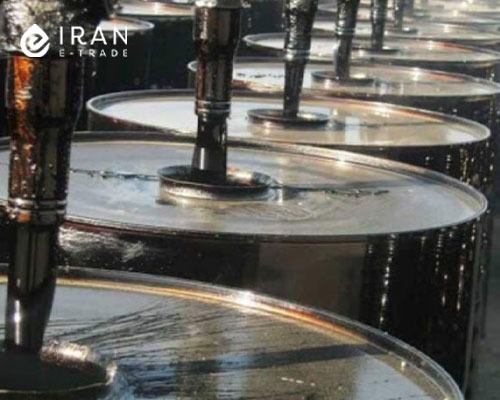
Methods of Increasing the Durability of Bitumen Emulsion
The bitumen emulsion production process is complex, and to increase the durability of the final product, you should consider several factors:
- Selecting the Right Bitumen
- The ratio of water to bitumen
- Using stable emulsifiers
- Using additives to enhance bitumen durability and improve its mechanical properties
- Adhering to production conditions asphalt emulsion
Safety Tips in Bitumen Emulsion Production and Use
In the production and use of asphalt emulsion, you should consider the following safety precautions:
- The droplets or vapours of this bitumen can cause eye damage and even blindness.
- Contact with the skin can result in severe irritation and burns.
- Digesting this bitumen can lead to mouth, throat, and stomach ulcers, causing difficulty swallowing, nausea, and vomiting.
- Inhaling bitumen emulsion vapour can cause breathing difficulties and nasal sores.
- This bitumen is non-flammable and does not burn.
Frequently Asked Questions Regarding Bitumen Emulsion Production Methods
Below, we answer some common questions about the asphalt emulsion production process.
What is the best method for adding water to bitumen emulsion?
In bitumen emulsion production, it is best to add water gradually to the bitumen.
Is it possible to dilute fast-curing bitumen emulsion with water?
No, fast-curing bitumen emulsion cannot be diluted with water.
What are the methods of producing bitumen emulsion?
Bitumen emulsion production is generally done by using continuous or batch methods.

source: petronaftco
Bitumen Price
- What Is LPG: Properties + Uses Liquefied Petroleum Gas
- What Is Petroleum Paraffin: Types + Properties And Applications
- What is Petroleum Coke: Types + Applications
- What Is Mazut: Advantages, Applications + Hazards
- What Is Diesel fuel: Types Gas oil + Applications
- What is gasoline? Types + Uses and Production Process

